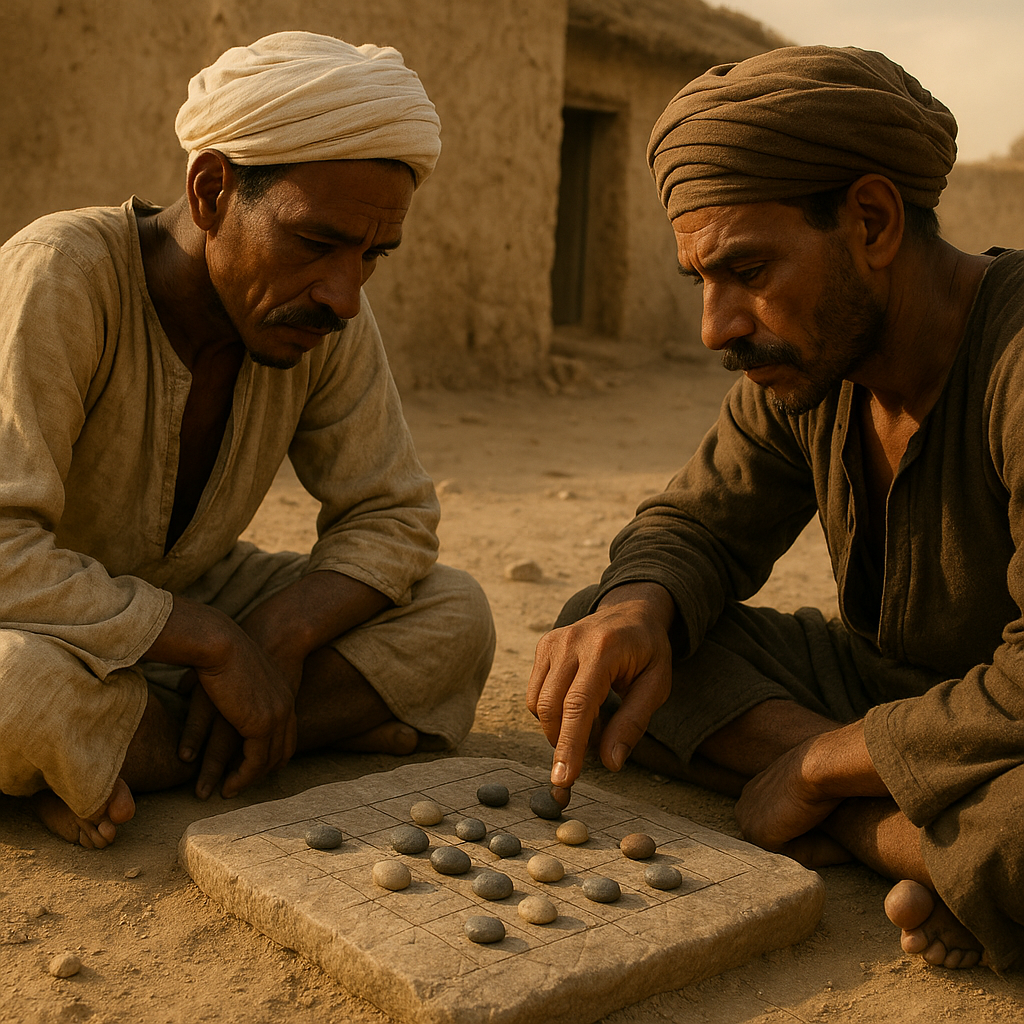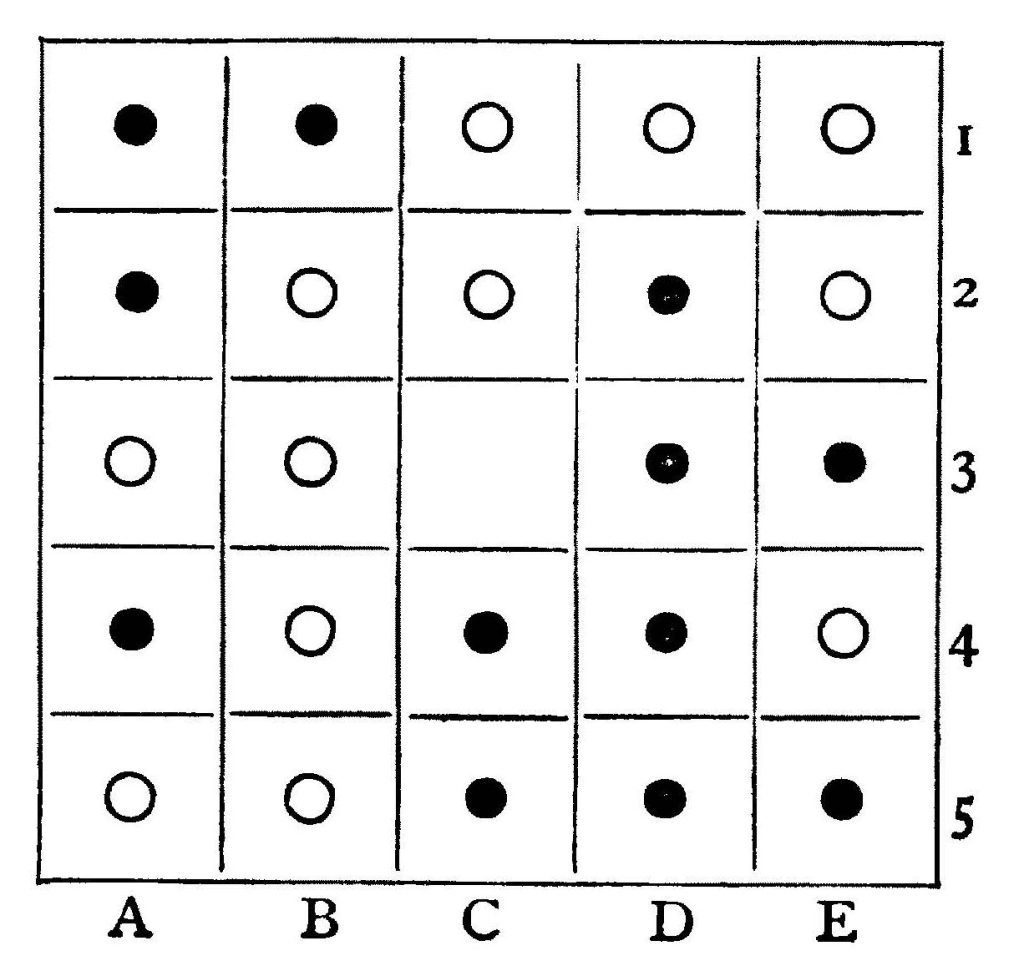When we think of ancient Egyptian games, our minds often drift to the grand, spiritual journeys of Senet or Aseb, games found resting beside pharaohs. But the everyday people of Egypt played games too, often with nothing more than a stone and a patch of earth. One such game was Seega, a contest of pure strategy and intellect that stands apart from its more famous cousins.
Seega is not a race to the afterlife; it’s a battle of wits on a 5×5 grid. It is a testament to the timeless human love for a tactical challenge, a forgotten gem of the ancient world.
A Game of the People

While its precise origins are debated by historians, Seega was documented being played widely by the people of Egypt in the 19th century, with many believing its roots stretch much further back into antiquity. Some scholars suggest a connection to ancient Greek (Petteia) or Roman (Latrunculi) strategy games, indicating a long and shared history of tactical board games throughout the Mediterranean.
Unlike the ornate Senet boards found in tombs, Seega was a game of the common folk. Boards were often simply scratched into flat stones, temple steps, or directly onto the ground. The pieces could be anything from pebbles to pottery shards. This accessibility made it a popular pastime in villages and military camps alike.
The Rules of Engagement: How to Play Seega

Seega’s beauty lies in its simple rules, which give way to surprisingly deep strategic possibilities. The game is played on a 5×5 board and is divided into two distinct phases.
- Phase 1: Placement The game begins with an empty board. Two players, each with 12 pieces, take turns placing two of their pieces at a time into any empty squares on the board. This continues until 24 of the 25 squares are filled. The central square must be the one left empty. This initial placement is crucial, as it sets the stage for the entire battle.
- Phase 2: Movement and Capture Once all pieces are placed, the movement phase begins. Players take turns moving one of their pieces one single space horizontally or vertically (not diagonally) to an adjacent empty square.
The goal is to capture your opponent’s pieces. A capture is achieved by “sandwiching” an opponent’s piece between two of your own. This is known as a custodial capture. For example, if your opponent’s piece is in a square and you move your pieces to occupy the squares on both its left and right sides, their piece is captured and removed from the board. The central square is a “safe haven”; a piece on this square cannot be captured.
The game is won when a player has captured all of their opponent’s pieces, or has trapped them so that they cannot make a legal move.
The Strategic Heart of Seega
Seega contains no element of luck. Victory is determined by skill alone. While the rules are straightforward, the game demands foresight and planning.
Successful players must think several moves ahead. The placement phase is not random; it’s an opportunity to create strong defensive formations and prepare offensive traps. Controlling the area around the central square is often key to dominating the board. A player must decide when to move aggressively to capture and when to play defensively to protect their own pieces. It’s a delicate balance of risk and reward, making every game a unique tactical puzzle.
Seega’s Place in Game History
Seega offers a fascinating glimpse into a different side of ancient leisure. It moves away from the religious symbolism and luck-based mechanics of other Egyptian games and focuses purely on human intellect. It demonstrates that the desire to out-think an opponent in an abstract battle is a universal and ancient human trait.
As a likely ancestor to many modern abstract strategy games, Seega deserves its place in the great library of ancient games—a clever, accessible, and endlessly replayable contest of wits.